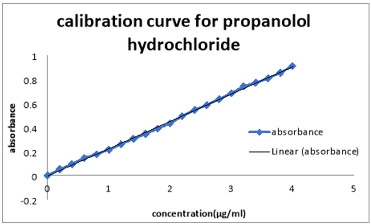Development of Controlled Release Osmotic Drug Formulation by Using Proponolol Hydrochloride to Improve Bioavailability
Main Article Content
Abstract
Controlled-release systems also offer a sustained-release profile but, in contrast to sustained-release forms, controlled-release systems are designed to lead to predictably constant plasma concentrations, independently of the biological environment of the application site. This means that they are actually controlling the drug concentration in the body, not just the release of the drug from the dosage form, as is the case in a sustained-release system. The main objective of this formulation development was to design an osmotic drug delivery system acting as a controlled release drug delivery system. In this formulation osmogen and release retardant were used to obtain suitable formulation. In the present study, attempts were made to formulate and evaluate API in extended release dosage form using osmotic drug delivery.
Article Details
References
Prescott LF. Novel Drug Delivery and Its Therapeutic application. West Susset, UK: John Wiley and Sons; 1989. The need for improved drug delivery in clinical practice; pp. 1–11.
Verma RK, Garg S. Current status of drug delivery technologies and future directions. Pharmaceutical Technology. 2001;25(2):1–14.
Dwarakanadha Reddy P, Swarnalatha D. Recent Advances in Novel Drug Delivery systems.International Journal of PharmTech Research. 2010;2(3):2025–2027.
Rastogi SK, Vaya N, Mishra B. Osmotic pump: a novel concept in rate controlled oral drug delivery. Eastern Pharmacist. 1995;38:79–82.
Reference Novel Drug Delivery System- Y.W.Chien. published by Marcel Dekkar, inc., New York Pg no. 17-36 & 57-111
Jerzewski R, Chien Y. Treatise on Controlled Drug Delivery: Fundamentals, Optimization, Application. Marcel Dekker; 1992. Osmotic drug delivery; pp. 225–253.
Rao BS, Kumar NR, Madhuri K, Narayan PS, Murthy KVR. Osmotic drug delivery systems. The Eastern pharmacist. 2001;521:21–28.
Verma RK, Krishna DM, Garg S. Formulation aspects in the development of osmotically controlled oral drug delivery systems. Journal of Controlled Release. 2002;79(1–3):7–27. [ PubMed ]
Santus G, Baker RW. Osmotic drug delivery: a review of the patent literature. Journal of Controlled Release. 1995;35(1):1–21.
Verma RK, Garg S. Development and evaluation of osmotically controlled oral drug delivery system of glipizide. European Journal of Pharmaceutics and Biopharmaceutics. 2004;57(3):513–525. [ PubMed ]
Eckenhoff B, Theeuwes F, Urquhart J. Osmotically actuated dosage forms for rate-controlled drug delivery. Pharmaceutical Technology. 1981;5(1):35–44.
Thombre AG, Appel LE, Chidlaw MB, et al. Osmotic drug delivery using swellable-core technology. Journal of Controlled Release. 2004;94(1):75–89. [ PubMed ]
Kaushal AM, Garg S. An update on osmotic drug delivery patents. Pharmaceutical
Technology. 2003:38–44.
Li X, Jasti BR. Design of Controlled Release of Drug Delivery Systems. McGraw Hill; 2006. Osmotic controlled drug delivery systems; pp. 203–229.
Rose S, Nelson JF. A continuous long-term injector. The Australian Journal of Experimental Biology and Medical Science. 1955;33(4):415–419. [ PubMed ]
Higuchi T, Leeper HM. Improved osmotic dispenser employing magnesium sulfate and magnesium chloride. US Patent No. 3760804, 1973.
Higuchi T. Osmotic dispenser with collapsible supply container. US Patent No. 3, 760,805, 1973.
Higuchi T, Leeper HM. Osmotic dispenser with means for dispensing active agent responsive to osmotic gradient. US Patent No. 3995631, 1976.

